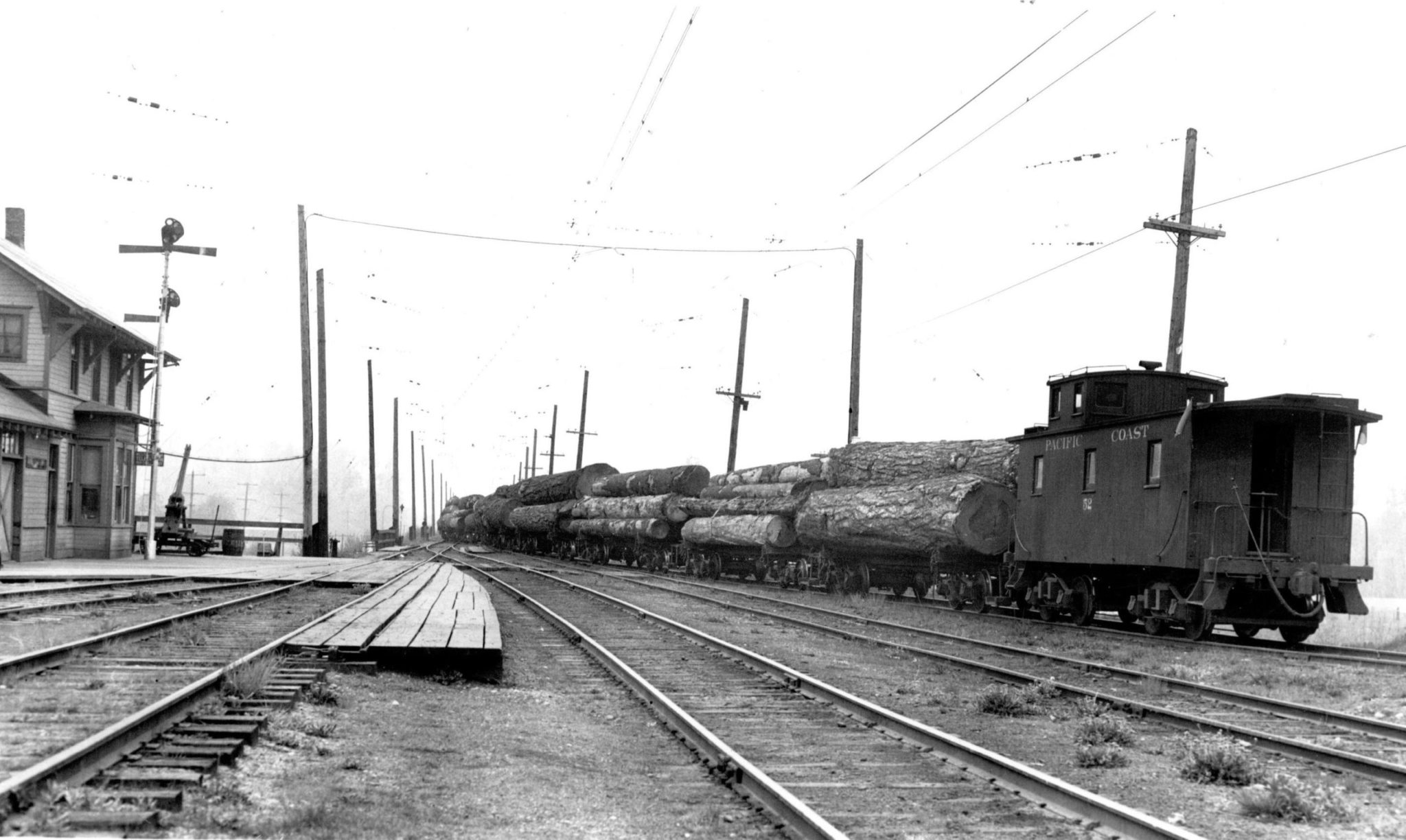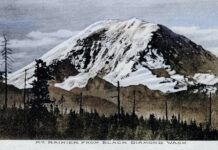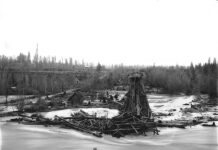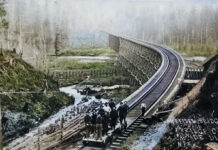Early Maple Valley developed around the bridge over the Cedar River called “the fourth crossing,” referring to the number of times a train crossed that river on its way south from Renton. The first was at Maplewood Roadside Park about a mile south of I-405; the second near 140th Way S.E.; the third by Royal Arch Park; while the fourth crossing became the heart of old Maple Valley. At the fourth crossing the railroad split with one leg turning towards Taylor and the other continuing south past Lake Wilderness and Four Corners. The Milwaukee Railroad later constructed a third line adding to the importance of Maple Valley as a rail hub. The fourth crossing at Maple Valley supported railroad facilities, including a depot and bunkhouse, three hotels, stores, homes, and later a school. When the precursor to Highway 169 was developed engineers followed the same route as the Columbia & Puget Sound Railroad had in 1882 when rails were first laid to service the promising coal mining towns of Black Diamond and Franklin.
By 1939, the second Maple Valley depot had replaced the first, as seen to the left in this photo. A third depot would later succeed that one. All three were all located across the highway from Foley’s Produce market with the foundation of the third, a large concrete slab still visible today. This giant load of logs transported by a Pacific Coast Railroad train was en route from Taylor to the Kennydale log dump on Lake Washington. The photographer, Harold Hill, was an employee of the railroad and his image is now part of the Warren W. Wing collection, and comes courtesy of JoAnne Matsumura, an Issaquah historian.







